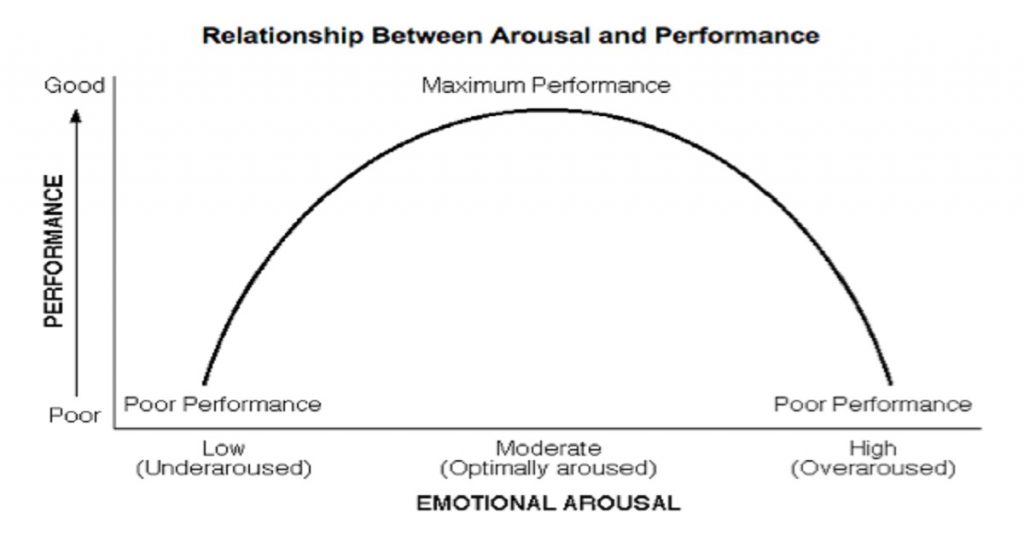Cueing the right muscles at the right time can make all the difference during strength training. Next time you deadlift, crank this song!
In all seriousness, music can have a profound effect on your training. Choose the wrong track, and it could actually hinder your performance.
To understand why, take a look at the classic inverted-U arousal curve. Picture soft music on one end and heavy metal on the other.

If you come into a workout already jacked up on caffeine and ephedrine, blasting vintage Metallica might not help—it could overstimulate you and throw off your technique, especially on a technical lift. No, you don’t need to play Kenny G, but sometimes no music is better. (Believe it or not, some people perform better with classical music in the background.)
As you begin to fatigue, though, that’s when you need the extra stimulation. That’s the time to crank up the tunes and shift the curve appropriately. A smart strategy is to save your favorite song—or the “heavier” stuff—for big lifts when you’re aiming for a PR.
Research shows that music can enhance performance by reducing perceived exertion, improving blood flow and lactate clearance, decreasing pain and discomfort, and allowing you to train harder and longer.
No doubt, music can be a powerful weapon in the gym. It’s been used for centuries to raise the testosterone levels of warriors heading into battle. Just use it wisely—don’t blast aggressive music while learning a new movement or during tapering phases. Pull out the “heavy” artillery only when it counts, or you’ll become desensitized and lose its effect.

No Time to Walk After a Meal? Do This Instead!
By now, most people know that getting in daily steps is essential for overall health. In particular, taking a short

Stay Fit on the Fly: No-Excuse Workouts for Travelers
One of the biggest challenges people face when traveling is maintaining their exercise routine. The two most common excuses? Lack

The DIY 3-Ingredient Skin Elixir
If you’re looking for one of the most powerful anti-aging skin creams on the market, look no further. You can
follow
Error: No feed with the ID 2 found.
Please go to the Instagram Feed settings page to create a feed.
